Multi-Divo
An export machine for Sweden made by the Berolina company, established by Ernst Schuster, who had been a distributor for Brunsviga, but decided in 1901 that he could build a better machine. From the documentation available, it is hard to figure out when these machines were built exactly. The company was still in existence when Martin wrote his famous book, but the concept of the machine was so antiquated by 1924 that it is difficult to believe that it still found a market by then.
Berolina had to deal with the Odhner/Brunsviga patent DE64925, which patented the engraving of numbers next to every input pin. Triumphator had the same problem, which is why they added the input control register to their early machines, and omitted the numbers from the input plate. Berolina chose to incorporate one single row of numbers, and then add horizontal lines over the width of the input plate. In the Multi-Divo machines, this was no longer necessary, indicating that they were produced later. They have their proper numbering, starting at 10000. I have N° 10079, and now N° 10153, which is also the latest number I've come across. We know now that at least 153 of these machines have been built.
In N° 10079, the serial number is stamped into the back of the metal base in very small numbers. The insides are identical to the machine restored by Detlev Bölter, which is 4 machines younger than mine. The patented input lock for which some provisions are made in the pinwheel cylinder and the chassis of the machine is missing in both nr. 10083 and 10079. I thought it may never have been built in, but in N° 10153, it is actually there, and working flawlessly.
Another element which the two earlier machines are missing, is simultaneous clearing of the result and counter register. But N° 10153 has this "feature" - turning the wingnut clears the counter register, whereas turning the handle clears both registers. It beats me what you're supposed to be doing if you want to clear the result register only, because this is impossible.
The key visual element in this machine is obviously the strange carriage shift lever. In order to shift the carriage, you give a single turn to the crank per position you want to shift. By keeping the crank up, you can freely shift the carriage, if too many positions have to be skipped. The length of the lever, however, necessitates that the machine is elevated above the level of the base plate - there is an extra block of wood under the base of the machine. Without this extra wood block, the lever touches the table before the base of the machine does.
In N° 10079, (probably for this reason) the baseplate has been remanufactured according to the original design, which thoughtfully incorporates a strip of felt for the metal cover to rest on. The plate itself, however, is too small, as the handle sticks out past the groove with the felt, and the carriage is also too wide to fit inside the cover, if one would be fitted.
For N° 10153, the story is different. The serial number can be found nowhere on the machine, but it is stamped into the original baseplate. In addition, it came with its metal cover (the first one I've ever seen for a Multi-divo) and the original key. Inside the machine, several parts are marked with "57", others with "47" - but the carriage casting itself is stamped with both, leading me to believe that all parts are original to the machine.
Pictures of N° 10079:
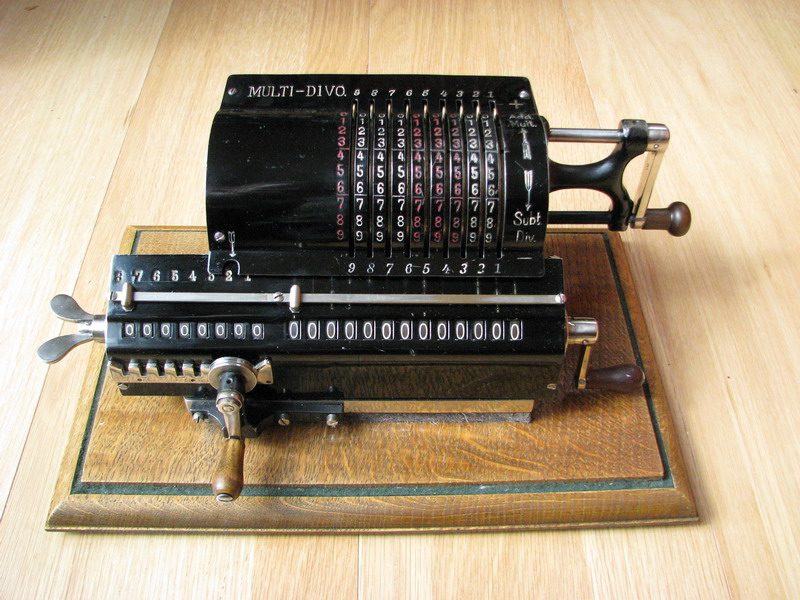
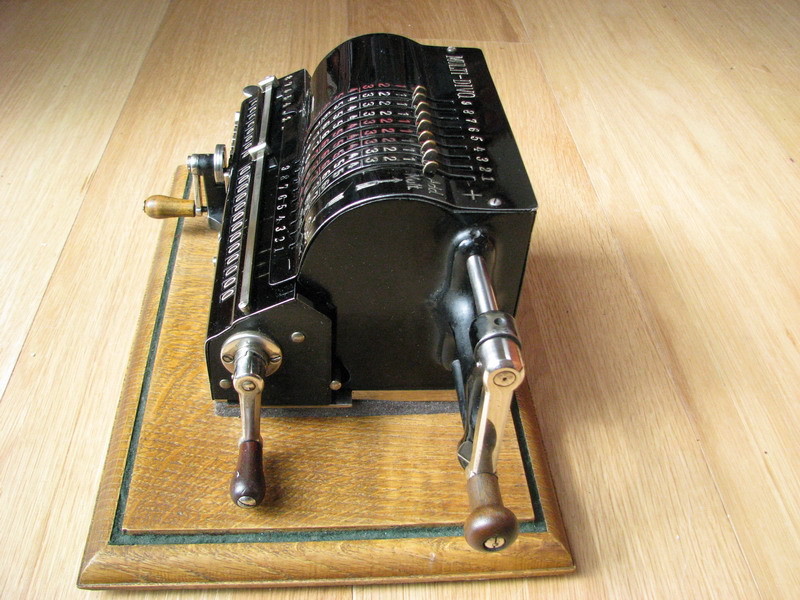
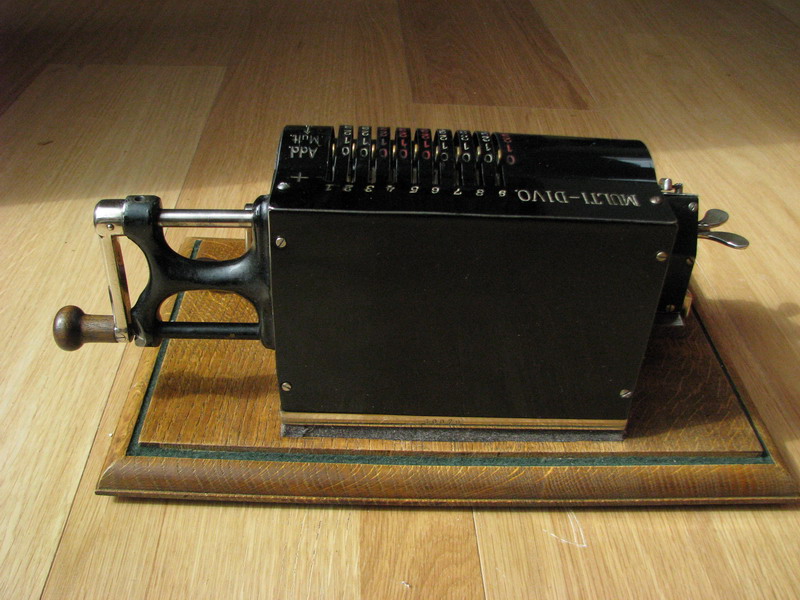
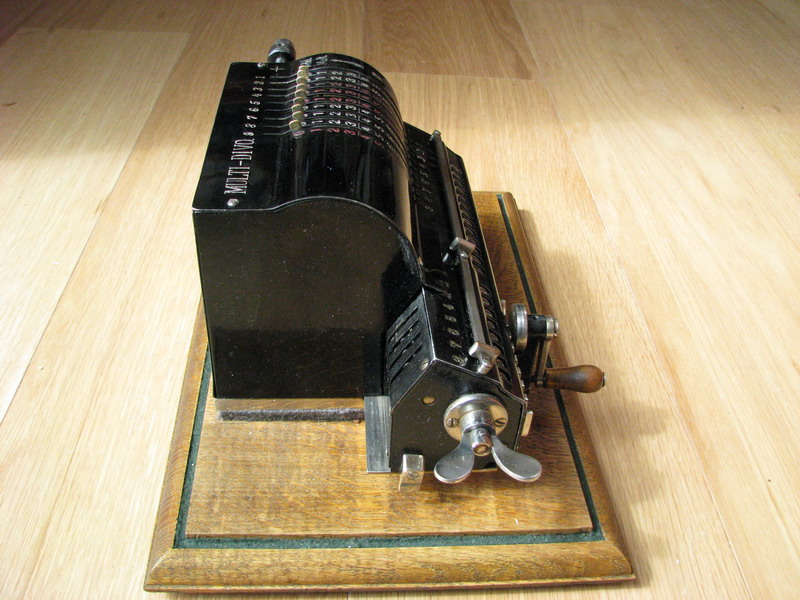
Pictures of N° 10153:
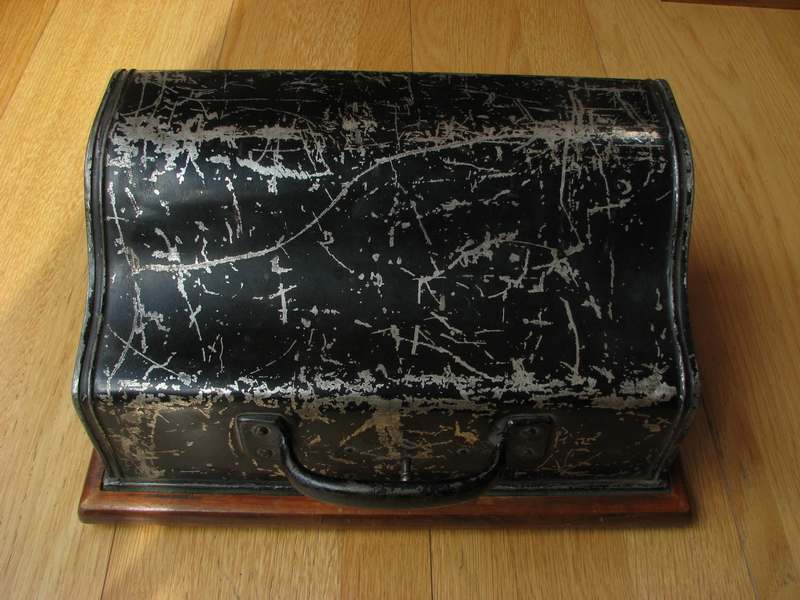
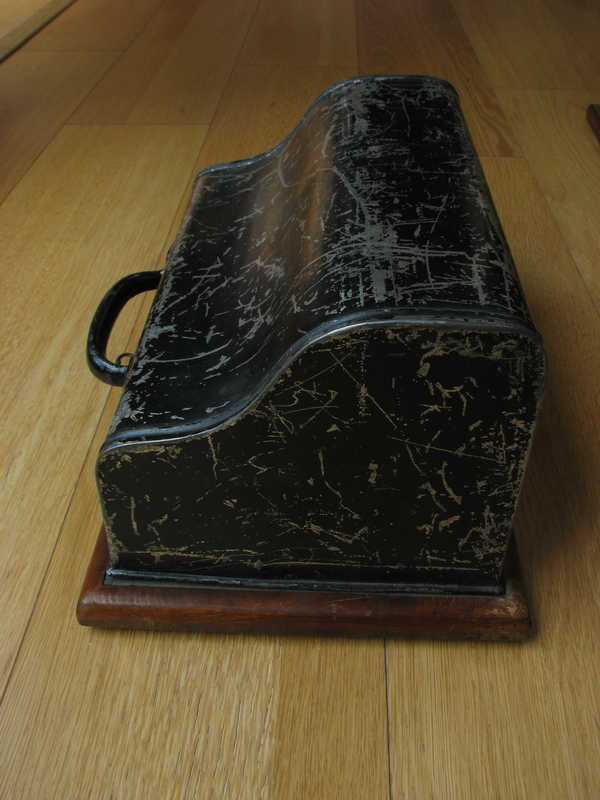

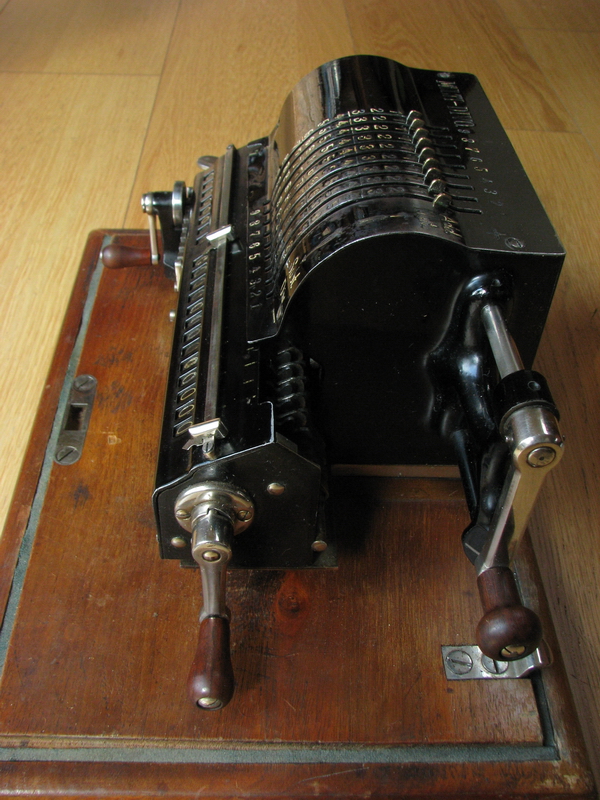
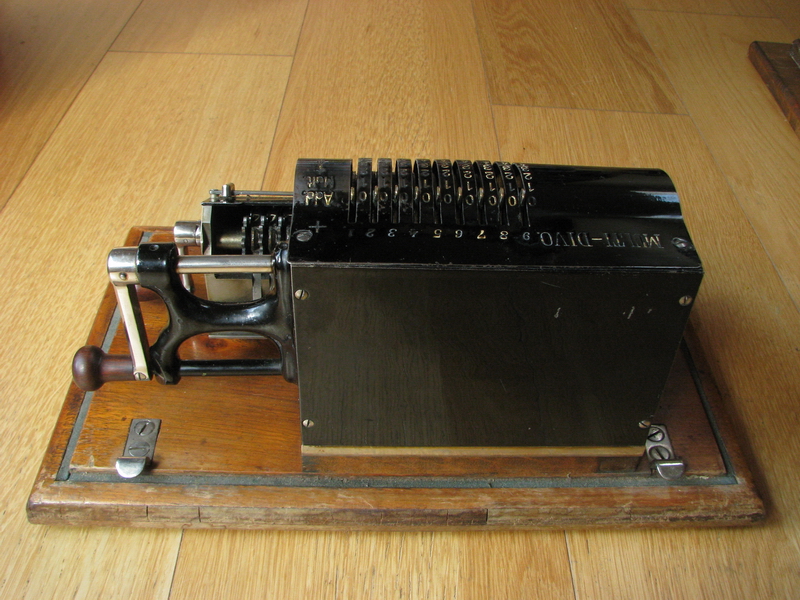
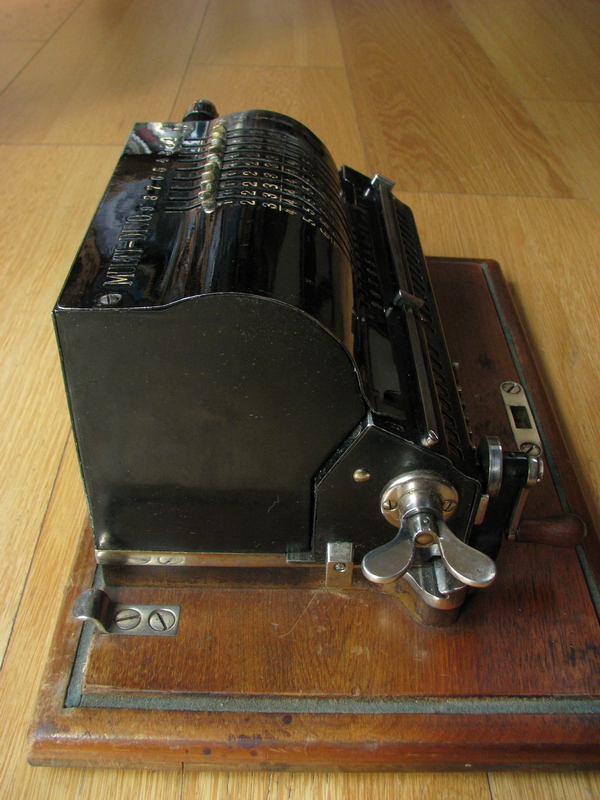
Lock mechanism for the pinwheel cylinder:
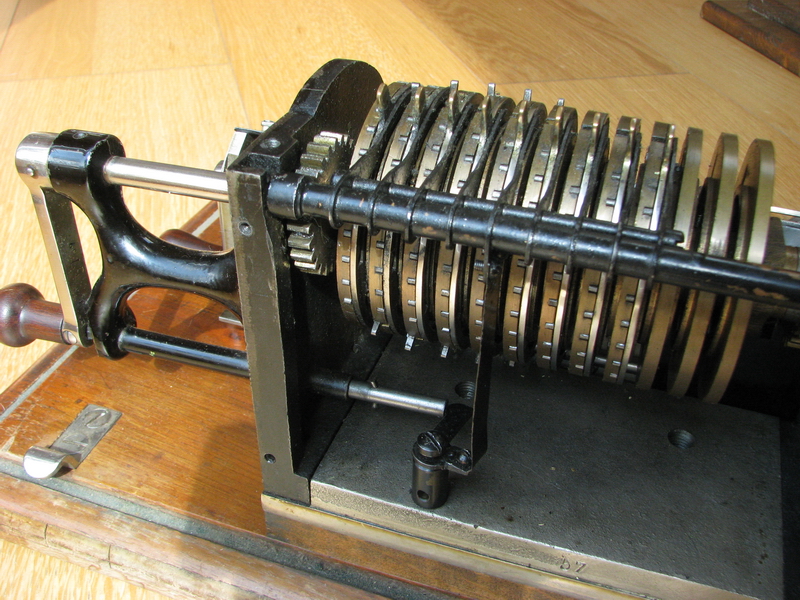
The series of linkages has for effect that the spring-loaded fingers at the top lift when the crank handle is pulled.
Crank handle in:
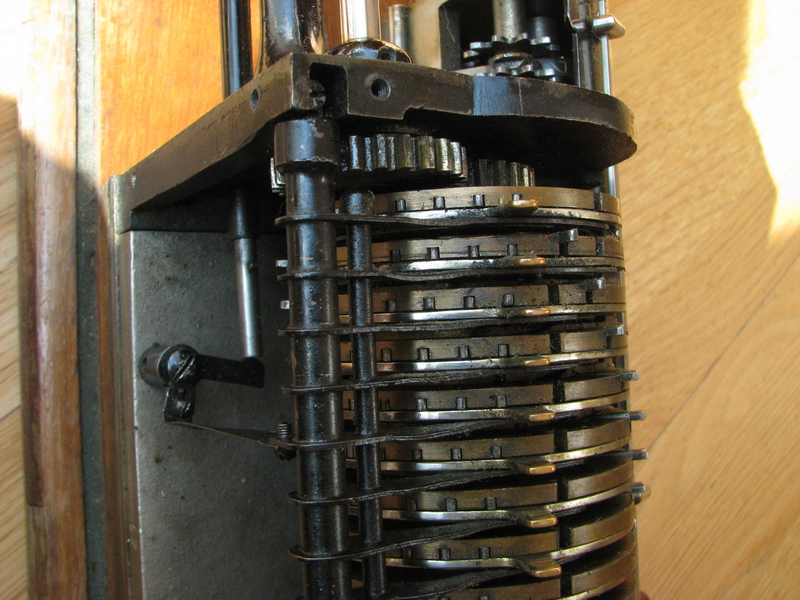
Crank handle out:
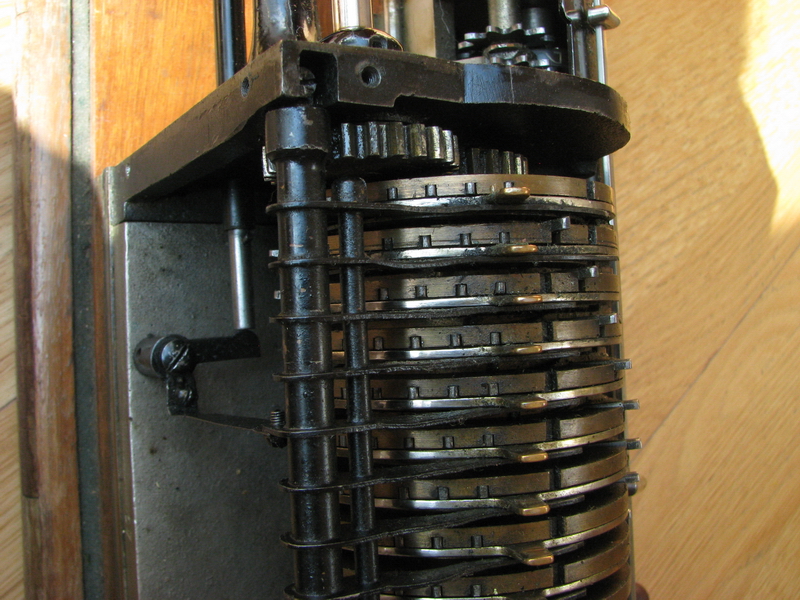
In turn, the lifting fingers release spring loaded blocks in the pinwheel cylinder which move out - into rectangular grooves in the setting rings, so that they stay blocked in their current position while the pinwheel cylinder is rotating.
Fingers down:
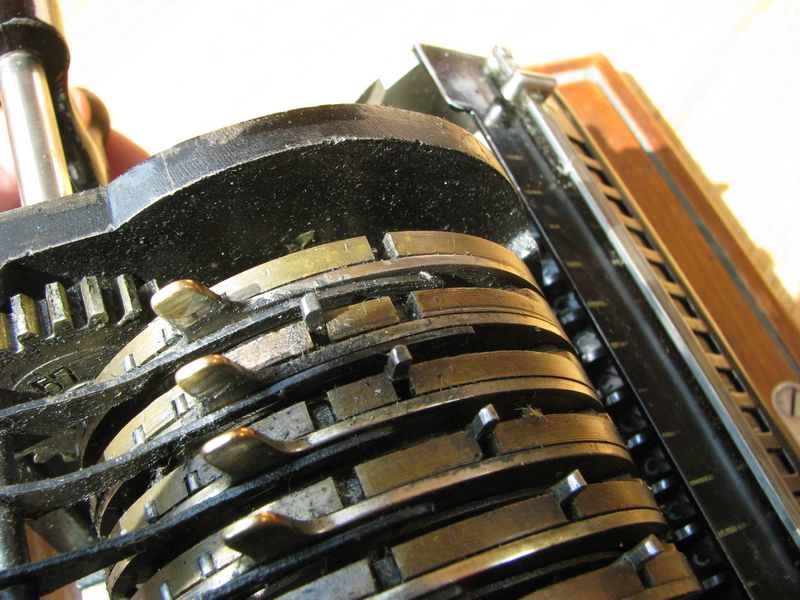
Fingers up:
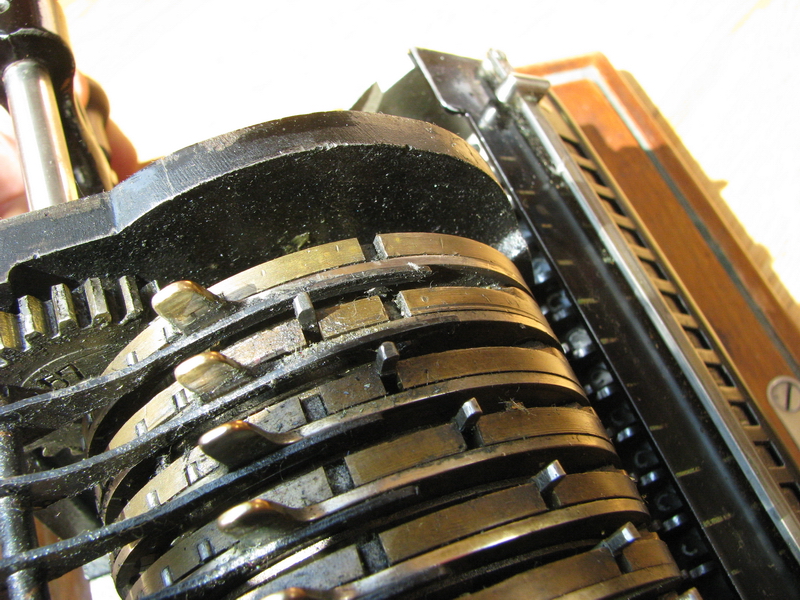
And with the pinwheel cylinder rotated away from its rest position - you can see the rectangular cutouts in some of the setting rings, as well as the blocks that fix them in place:
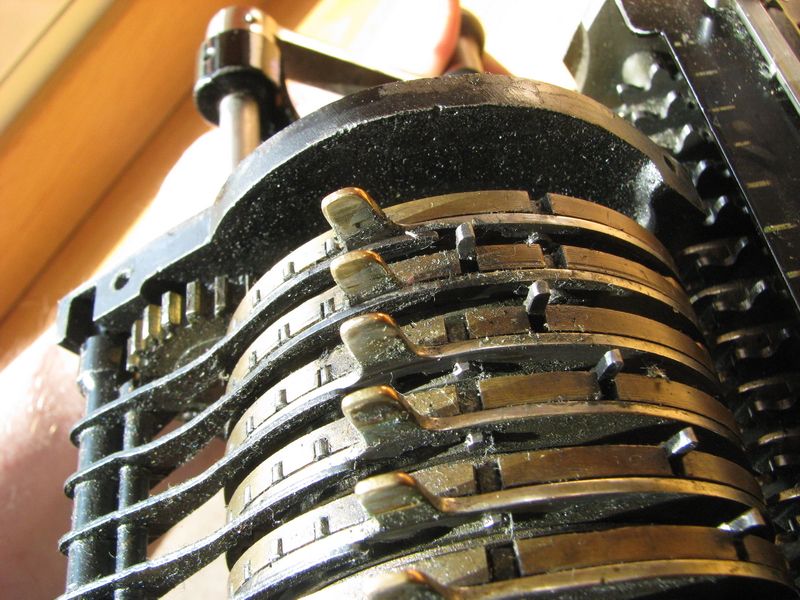
The system works well, but any fault will result in blocked setting pins, and render the machine unusable. This is probably why the mechanism was often removed.
